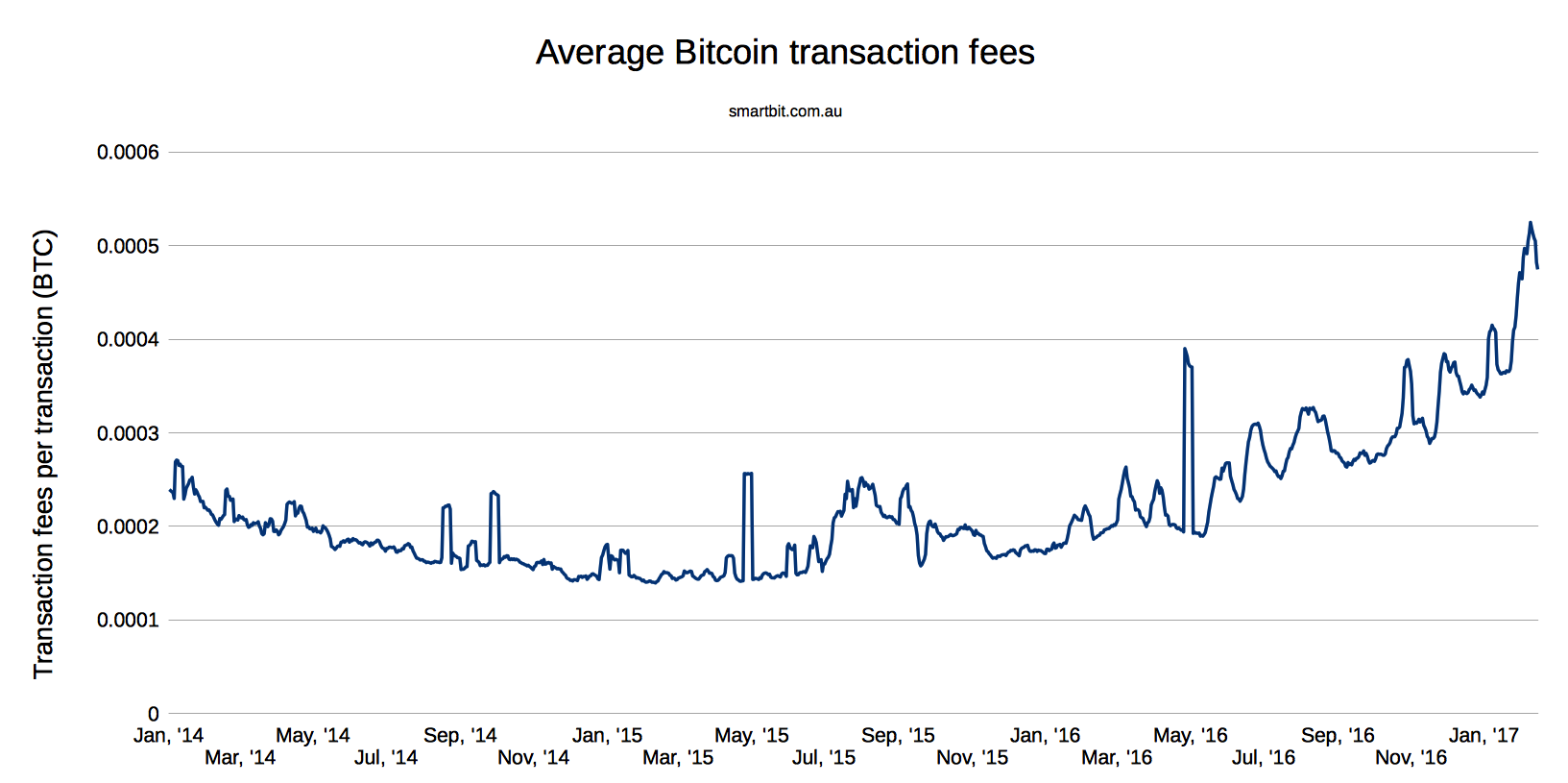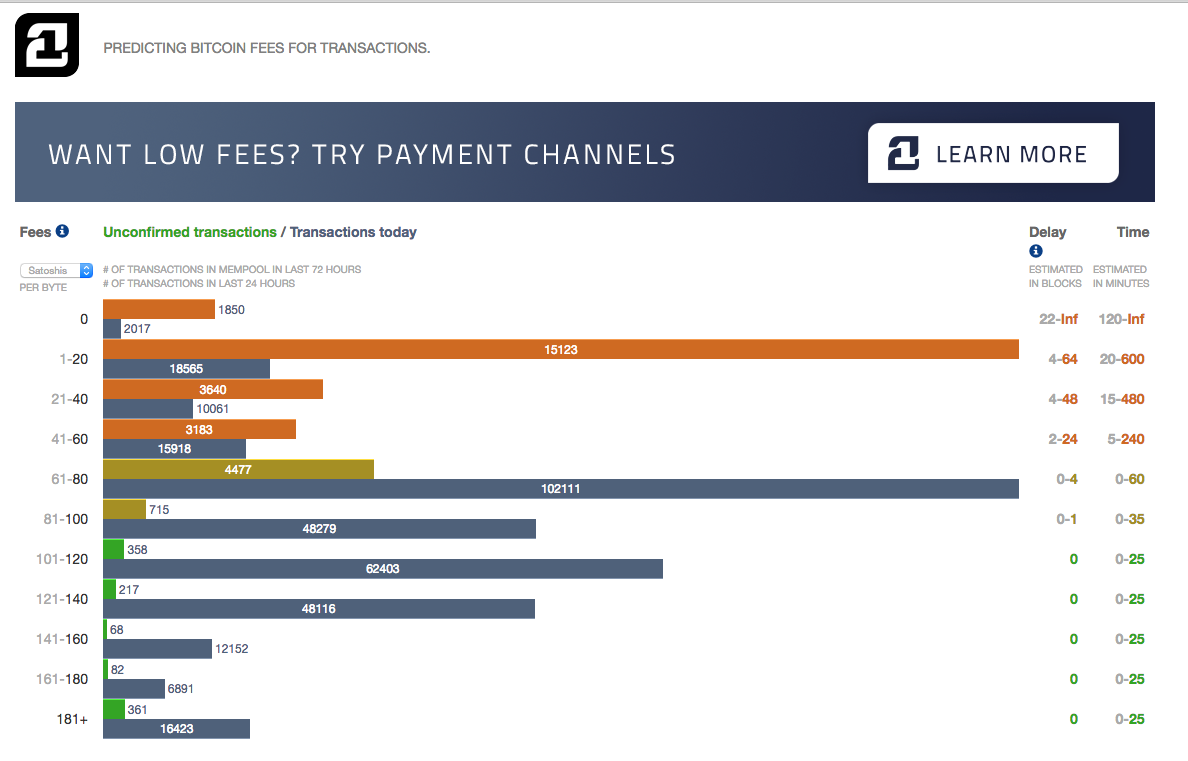
Bitcoin transaction fees have been constantly rising for more than a year. This constant rise causes transactions to be stuck when they are sent with transaction fees that are too low. Why does this happen? And what can you do to avoid it?
With the right knowledge you can make sure your important transactions don't get stuck in limbo. It's more important than ever to learn how Bitcoin transactions work and how transaction fees affect the time it takes for your transactions to arrive.
My transaction I sent is stuck, what can I do?
Every Bitcoin transaction that's sent has to pay a small fee to the Bitcoin miners to be included into the Blockchain and sent. Bitcoin transactions are sent (confirmed) in batches (called blocks). Each block can only fit a limited amount of transactions and it's the transaction fee that determines if your transaction is included or not. The higher the fee you pay, the more likely it is your transaction will be included and will confirm.
If your transaction is stuck it most likely means that other users are paying a higher fee and what you paid is too low and your transaction isn't included in blocks. Sadly, there is no easy way to increase the transaction fee once the transaction is already sent. For a transaction that's stuck and already sent you can only wait until the transaction eventually confirms.
The next time you send a transaction, make sure it is sent with a transaction fee that's high enough. Most Bitcoin wallets will let you choose the fee you want to use when sending the transaction. The most common way is by selecting a transaction priority. To make sure your transaction gets confirmed quickly, we recommend always selecting high priority.
Some Bitcoin wallets allow you to manually set the fee or to set what's called a fee level or fee size. Read on for how you can find out what the correct fee level is.
How LocalBitcoins handle transaction fees
We always send every transaction as high priority. Our transaction fees are optimized so that each transaction is confirmed within three blocks (Usually 30 minutes).
The fee we send your transaction with is not the fee that you pay, we average out the all the transaction fees we pay over a 6 hour period and charge you the average fee. This makes it easier for you to predict the fee you have to pay while it gives us the ability send some transactions with an extra high fee.
The nuts and bolts of transaction fees
Confusingly it's not the Bitcoin amount of the transaction fee that is important, but how large the transaction fee is compared to amount of space that the transaction takes up on the blockchain.
This is called the fee/size and it is measured in satoshis/byte (Satoshis per byte). One satoshi is a billionth of a Bitcoin. One byte is a unit of measurement of the size of information on a computer.
A typical Bitcoin transaction uses about 226 bytes of space, and the current fee level to get a transaction to confirm within 3 blocks is about 100 satoshis/byte. This means that the average fee you need to pay for a quick transaction is 0.00022600 BTC or 0,2281 USD.

You can see the fee/size of transactions you've already sent from a block explorer, we like to use tradeblock.com.. To search for your transaction you'll need to know the transaction ID of your transaction, this is usually displayed in your Bitcoin wallet transaction history. After you've search for your transaction the fee/size will be shown among the details of the transaction, I've underlined it in the screenshot above.
To find out how long you need to wait for your transaction to confirm you can look up the fee/size on , a great tool made by the guys at 21 inc. It lists the current estimated confirmation times for transactions paid with different fee sizes.

Looking at the leftmost column you see different fee/size levels in sat/B. In the middle the bars show many transactions are currently waiting to be confirmed with that fee/size. The two rightmost columns show how long it will, on average, take for those transactions to confirm in blocks and in minutes.
Use the fee/size you looked up on tradeblock, which in our example is 180 sat/B, and find the corresponding fee/size grouping in the leftmost column. 180 sat/B goes in the second lowest fee/size group of 161-180 sat/B. We can then see that the rightmost columns say 0, this means the transaction will be included in the next block or in 0-25 minutes.
